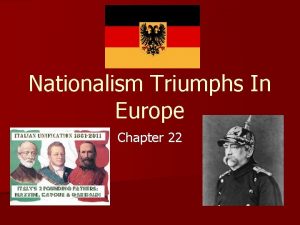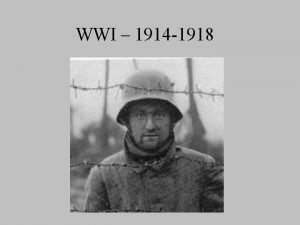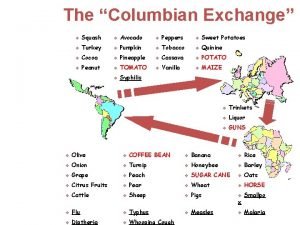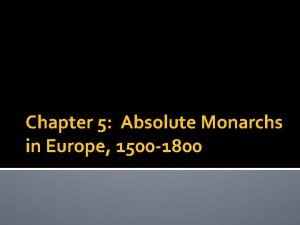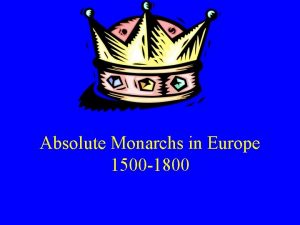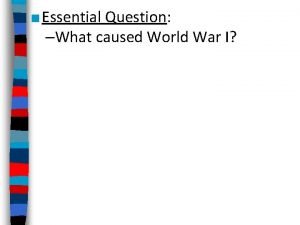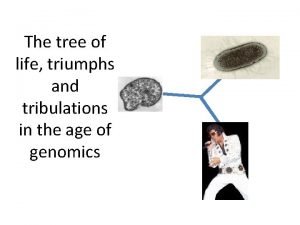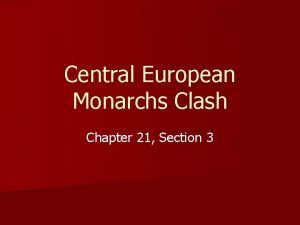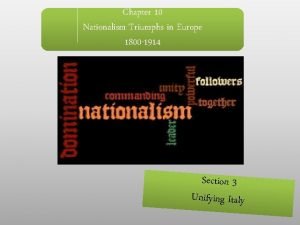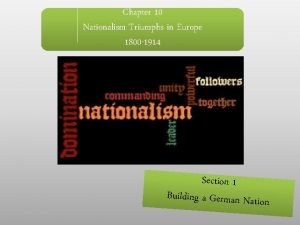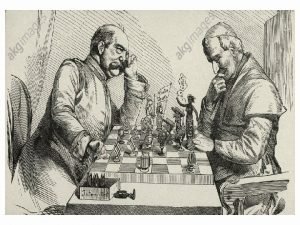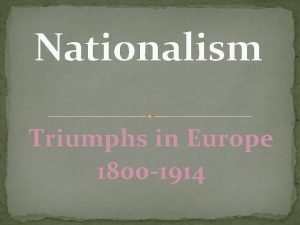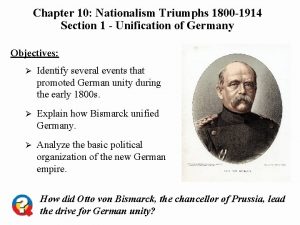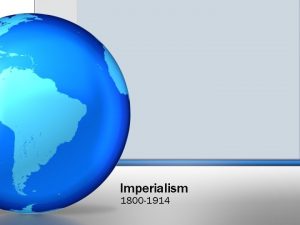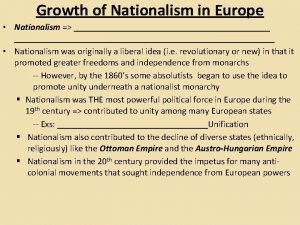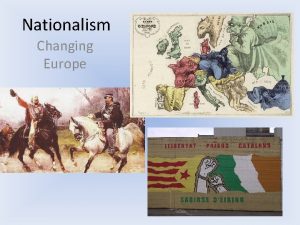Chapter 10 Nationalism Triumphs in Europe 1800 1914
















- Slides: 16


Chapter 10: Nationalism Triumphs in Europe (1800 -1914) Section 5: Reform and Reaction in Russia Objectives Ø Describe major obstacles to progress in Russia. Ø Explain why tsars followed a cycle of absolutism, reform, and reaction. Ø Understand why the problems of industrialization contributed to the outbreak of revolution. Why did industrialization and reform come more slowly to Russia than to Western Europe?

Terms and People • Alexander II – ruler of Russia who came to the throne in 1855; responsible for some reforms in Russia, but was eventually assassinated by radicals • Crimean War – a war that broke out when Russia invaded Ottoman lands along the Danube; ended in Russian defeat • emancipation – the act of freeing someone, usually from slavery or serfdom • zemstvo – an elected assembly in Russia that was responsible for road repair, schools, and agriculture at a local level • pogrom – a violent mob attack on Jewish people • refugees – people who flee their homeland to seek safety elsewhere • Duma – an elected national legislature in Russia • Peter Stolypin – prime minister appointed by Tsar Nicholas to restore order through arrests, pogroms, and execution; attempted reforms but was ultimately assassinated

Russia was a major world power by 1815, but it was also economically undeveloped. • Russia was the largest and most populous nation in Europe—and had abundant natural resources. • However, it had a very autocratic government. • Russian rulers resisted reforms that would lead to modernization, fearing they would be a threat to absolute rule.

One obstacle to progress was Russia’s very rigid social structure. • Landowning nobles at the top resisted change and reforms. • The middle class was weak and small. • Most people were serfs, bound to the land. • Many Russians knew serfdom was inefficient, but landowners had no interest in developing industry.

The synchronization of action through song was crucial for physically challenging tasks. In Russia, groups of 50 to 125 serfs were harnessed to boats and forced to pull them upriver. A brutal job, bargehauling was despised by all. Serfs endured this work by singing a song known as the “Song of the Volga Boatmen, ” or “Hey, Ukhnem. ” “Ukhnem” translates to the English equivalent of “heave-ho, ” and comes from the “ukh” sound that serfs made with each collective tug. https: //youtu. be/Kfs. Wo. Np. Hg 2 s As the serfs pulled in unison, this song coordinated their efforts. https: //youtu. be/LJRts 1 kwz. Kc - American Version

Tsars ruled Russia with absolute power. Whenever the tsars made liberal reforms, they eventually cancelled them to maintain the support of the nobles. While the governments of other European nations changed, Russia remained an absolute monarchy.

Alexander II inherited the throne during the Crimean War in 1855. • The war began when Russia tried to seize Ottoman lands, and ended in Russian defeat. • The war showed how backward Russia was and people started to demand change. In response to pressure, Alexander agreed to the emancipation of the serfs. Though peasants remained poor, emancipation was a turning point that led to the drive for more reform.

The Reforms of Alexander II Emancipation of the serfs Establishment of local government in the form of zemstvos, or elected assemblies Legal reforms such as trial by jury Reduction in military service

The reforms did not satisfy the Russians, who wanted a constitution or more revolutionary changes. Socialists tried to convince peasants to rebel, which didn’t work. Radicals became angry and assassinated Alexander III took the throne and embarked on a crackdown. He increased the power of the secret police and exiled critics. Killed by Radicals

Persecution of Russian Jews also increased under Alexander III. • He forced them to live in restricted areas. • Pogroms against the Jewish communities became common. • Many Jews left Russia and became refugees. A large number emigrated to the United States. Groups such as Poles, Ukrainians, Armenians, Finns, and Muslims also faced persecution.

Russia finally industrialized during the late 1800 s. Tsar Nicholas II, son of Alexander III, focused on economic development. His government encouraged the building of railroads and secured foreign investment. Despite progress, political and social problems worsened as workers faced poor conditions in factories and urban slums.

Russia entered a war with Japan in 1904 and suffered humiliating defeats. Ø Losses abroad fed discontent at home. Protesters poured into the streets and workers went on strike. Ø On a Sunday in 1905, a priest organized a peaceful march in St. Petersburg. Ø The tsar’s soldiers fired on the crowd, killing or wounding hundreds, in an incident known as “Bloody Sunday. ”

Bloody Sunday was a turning point for Russians, who felt they could no longer trust the tsar. • Discontent grew, strikes increased, and rural peasants demanded land. • Nicholas announced major reforms, including a pledge to summon a Duma. • However, the tsar dissolved the Duma in 1906. The pattern of reform and reaction continued.

Nicholas appointed Peter Stolypin as prime minister in 1906. • Peter Stolypin worked to restore order with arrests and executions. • He recognized the need for change and introduced several very limited reforms. • It wasn’t enough, and Russia still roiled with unrest. Stolypin was assassinated in 1911.

Why did industrialization and reform come more slowly to Russia than to Western Europe? Efforts to modernize Russia had little success because tsars imprisoned or exiled critics. As the twentieth century dawned, Russia was a hotbed of civil unrest.
 Nationalism triumphs in europe
Nationalism triumphs in europe Nationalism triumphs in europe
Nationalism triumphs in europe Nationalism triumphs in europe
Nationalism triumphs in europe Nationalism 1800-talet
Nationalism 1800-talet 1918 europe map
1918 europe map Map of europe 1914
Map of europe 1914 Chapter 29 section 2 the triumphs of a crusade
Chapter 29 section 2 the triumphs of a crusade Mercantilism
Mercantilism 5 monarchs of europe
5 monarchs of europe Characteristics of absolute monarchs
Characteristics of absolute monarchs Nationalism in europe
Nationalism in europe Nationalism in europe notes
Nationalism in europe notes Nationalism in europe lesson plan
Nationalism in europe lesson plan Truth alone triumphs meaning in hindi
Truth alone triumphs meaning in hindi Triumphs and tribulations
Triumphs and tribulations Where were the early axis triumphs
Where were the early axis triumphs Hapsburg triumphs
Hapsburg triumphs


